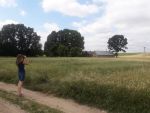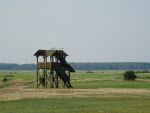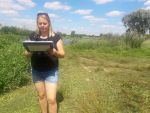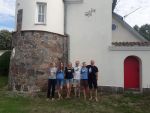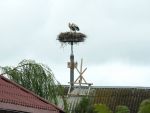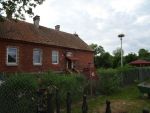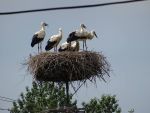... and soon most of them will fly south, through the Bosporus Strait to South Africa. We keep our fingers crossed for them.
In July, when young birds were still in nests, we monitored the breeding success of storks nesting in Natura 2000 areas located in the valleys of the rivers: Narew, Bug, Biebrza, Omulew (Narew tributary) and Liwiec (Bug tributary). We checked more than 2000 nests: working in 3 two-person teams, we drove almost 8000 km. We counted birds from the ground and from the air: using a throne.
We spent two weeks in the field - the period when we count storks is short. If we start too early we won't see the young, which are lying in the middle of the nest and are practically invisible from the ground, and if counting is prolonged some of the birds can already start flying. Small chicks can be clearly seen from the throne - in such situations we are supported by modern technology, and on July 13th we already had the first flying young in the Narew valley, luckily they kept close to the nest.
It is a great pleasure for us to visit places where we replaced the endangered nests with new ones and we see that they are occupied by storks.
A note with the results of the monitoring will soon be published on our project website. We will see how this year's breeding success came out. Due to the fact that the Summer was dry and hot, we were afraid that storks had too little food. However, it is also possible that in the area monitored by us, the proximity of the river eliminated the impact of drought, and the lack of storms, gusty winds and squalls protected the nests and the young from destruction. According to preliminary observations, there were many nests with 4 and 5 young ones. We even found one nest with 6 birds, in Izbiszcze in Natura area - the Narew Marshy Valley! Whether storks brought up more chicks compared to the previous year - we will find out after summarizing and comparing the data.


